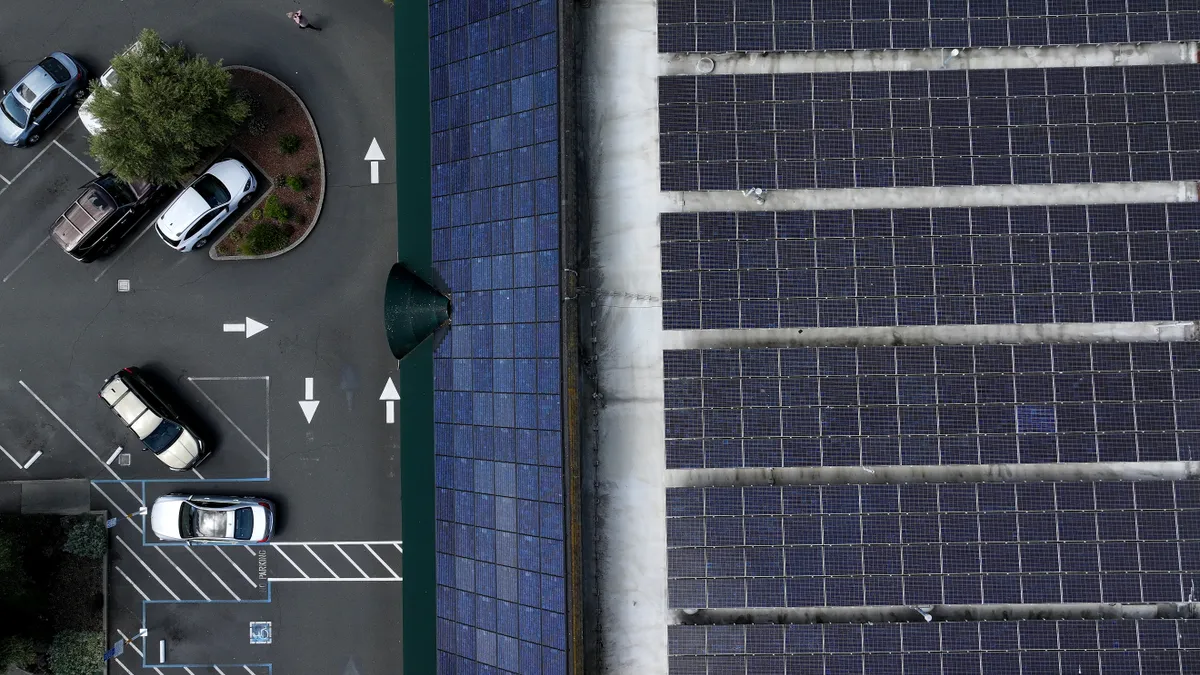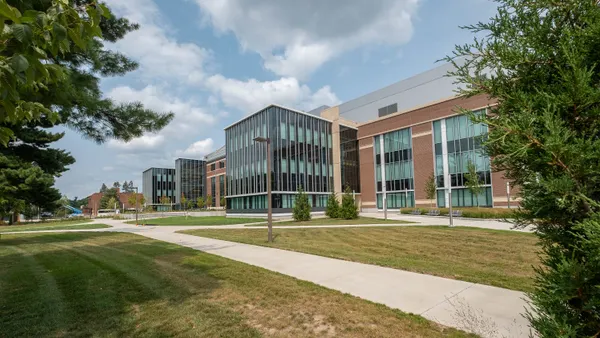Dive Brief:
- This month’s bankruptcy of major U.S. residential solar installation company SunPower was influenced by several factors, including high interest rates, accounting problems and a loan-based business model, along with its exposure to the California market and the impacts of the state’s net metering 3.0 policy, said Raymond James Senior Equity Research Associate Graham Price.
- Price said “[competing solar] companies like Sunnova, Sunrun and suppliers like Enphase will probably come out of this just fine .... [the bankruptcy] might even result in net adds for Sunnova.”
- But in California, the bankruptcy dealt a “really big blow” to the state’s troubled residential solar industry, said Bernadette Del Chiaro, executive director of the California Solar & Storage Association. “SunPower is the most quintessential flagship California solar company around,” she said. “It's a big blow financially, it's a big blow almost psychologically.”
Dive Insight:
SunPower was originally based out of San Jose and retained a strong presence in California, Del Chiaro said, with over 350 SunPower dealers in the state. The company derived about 50% of its sales from the California market, Price said.
“If a company that is more invested in California than its other national competitors just went belly up, doesn't that sort of speak volumes that California policy decisions played a massive role, if not the defining role?” said Del Chiaro.
California’s latest net metering tariff, NEM 3.0, cut compensation rates for customers who sell their excess solar energy back to the grid and highly incentivized the use of solar-plus-storage.
The change — which went into effect in April last year — was necessary to modernize California’s grid, increase battery use and reduce the bills of customers without solar, a California Public Utilities Commission spokesperson said in December.
But the rule has “basically necessitated including battery storage in almost all installations at this point,” creating a significant shift in the market, Price said. “The economics still make sense when you do attach a battery, but that is a heftier system cost and a larger investment. So that has made California certainly weaker than the overall market in the early part of the year.”
However, Price said he thinks the number one issue that was impacting SunPower was volatility around interest rates and “sticker shock” for customers who wanted to take out a loan to install solar and were being quoted at interest rates 8% and higher, compared to 3% or 4% a few years prior.
This hit SunPower harder than its competitors like Sunnova and Sunrun, Price said, because SunPower was “more heavily reliant on solar financing from loans versus third party options that include leases and [power purchase agreements.]”
“They did not do a good job of shifting the business model towards leases and PPAs, so when demand for loan-based systems dried up, they did not do a good job pivoting,” he said. “Some competitors were much better at that.”
SunPower additionally “just did not seem to do a very good job managing operating costs,” Price said. “[Selling, general, and administrative expenses] got out of control. They had a lot of accounting issues, they were perpetually delinquent on their quarterly filings.”
In Aug. 5 bankruptcy filings, SunPower’s Chief Transformation Officer Matthew Henry said the company “has faced a severe liquidity crisis caused by a sharp decline in demand in the solar market and SunPower’s inability to obtain new capital.”
Price said that while SunPower was a “major player” in the sector, there are around 5,000 solar installers in the U.S. “It's not like this isn't a pretty wide, non-concentrated group,” he said. “I think overall, U.S. solar will be fine. This was just kind of the culling of a weak player.”
Raymond James remains “overall positive” on residential solar, he said, chiefly due to the continued year-over-year increase of U.S. residential electricity prices. In addition, despite the impact of NEM 3.0, California remains a promising residential solar market due to the high price of electricity there, Price said.
Del Chiaro agreed that distributed solar “is still in very much high demand” in the state for that reason, along with the benefit of California’s consistent sunshine.
“Unfortunately, the state has made a bunch of really bad decisions, policy decisions that have made it harder for consumers to make that move to solar, and as a result our market is down,” she said. “Today, it's down 60% compared to where it was in 2022.”
The Solar Energy Industries Association’s first quarter 2024 market report found that U.S. residential solar installations shrank 25% year-over-year “as the segment continued to struggle with high interest rates and the transition to net billing in California,” and the California Solar & Storage Association estimates a statewide loss of 17,000 solar jobs throughout 2023 as the result of NEM 3.0.












